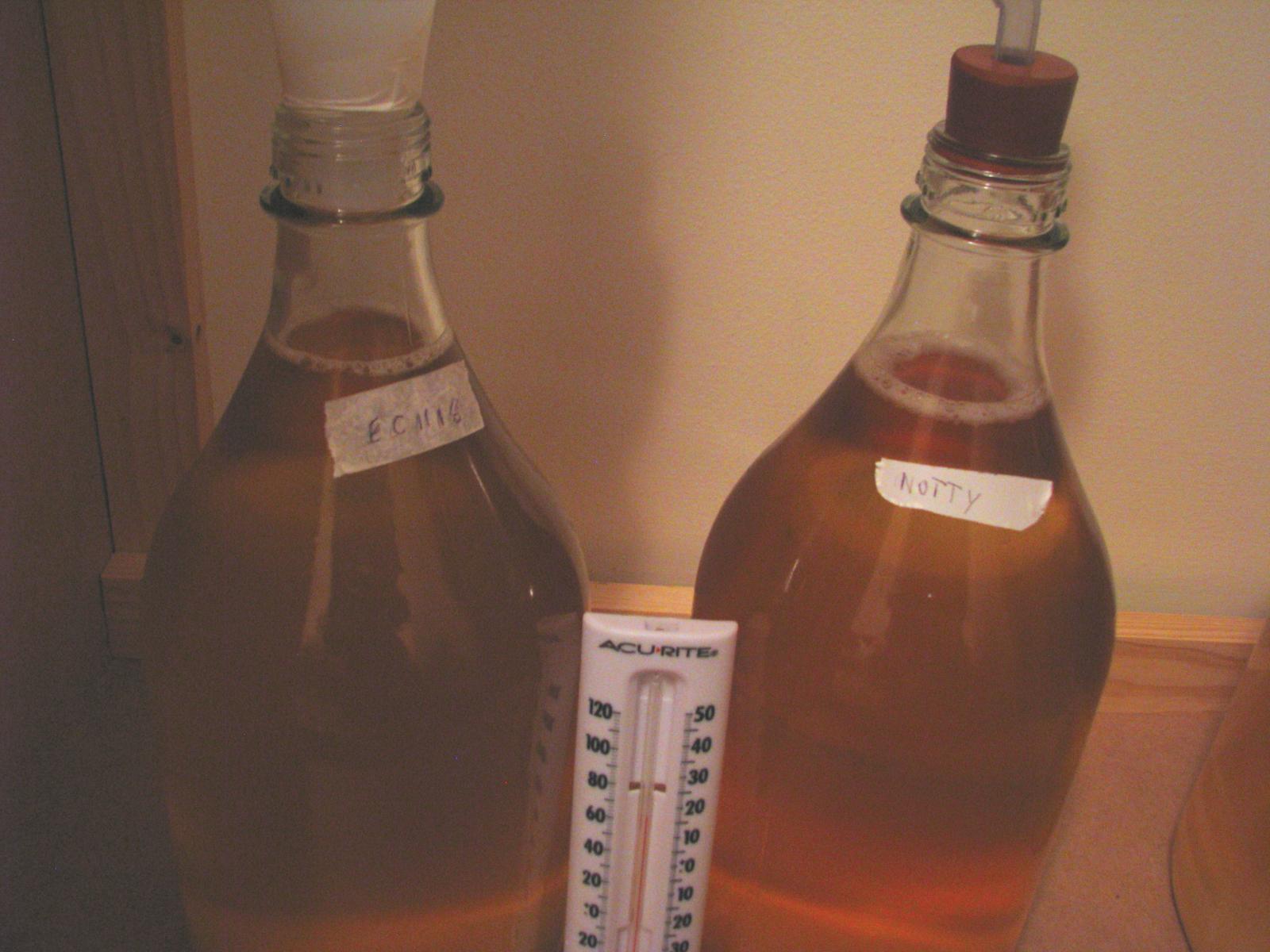I am ready to carb bottle three x two litre (about 1/2 gallon) "test batches" that have been sitting in secondary for a month. The plan is to use recycled 330ml bottles (about 3/4 pint) with crown caps
Batch 1 is a mix of juice from "leftover apples" Pomme de Neige, Pippins, Red Delicious, Granny Smith and Crab Apple. EC1118 yeast. It was 1.004 going into secondary and hasn't changed. Tastes quite good!
Batch 2 is the same juice with Nottingham yeast. It was 1.010 going into secondary and hasn't changed.
These two "test batches" are to see what difference the the yeasts make. Already it is obvious that the Notty is quite a bit darker than the EC1118.
Batch 3 is mostly Granny Smith with some Pomme de Neige and EC1118. It was also 1.004 and hasn't changed. A bit tart but should become a nice light cider.
I had planned to "sugar up" to 1.005 on bottling. The reason for this is that a carbonation test just using sugar and yeast in water gave the best carb result from 1.005
BUT, as you can see from the finished SG, this might not work. So, any suggestion re how much I "should sugar up" to get reasonable bottle carb?
In the past I have worked on 1 tsp of sugar per pint, but this was just a rough guide before having a hydrometer and sometimes resulted in very fizzy bottles.
I did notice in the Notty batch that the hydrometer seemed to stir up some bubbles which also formed on the glass and so might have overstated the finished SG.
I had planned also to stove top pasteurise but RPH Guy suggests that fully fermented cider doesn't need to be pasteurised. Any comments?
Batch 1 is a mix of juice from "leftover apples" Pomme de Neige, Pippins, Red Delicious, Granny Smith and Crab Apple. EC1118 yeast. It was 1.004 going into secondary and hasn't changed. Tastes quite good!
Batch 2 is the same juice with Nottingham yeast. It was 1.010 going into secondary and hasn't changed.
These two "test batches" are to see what difference the the yeasts make. Already it is obvious that the Notty is quite a bit darker than the EC1118.
Batch 3 is mostly Granny Smith with some Pomme de Neige and EC1118. It was also 1.004 and hasn't changed. A bit tart but should become a nice light cider.
I had planned to "sugar up" to 1.005 on bottling. The reason for this is that a carbonation test just using sugar and yeast in water gave the best carb result from 1.005
BUT, as you can see from the finished SG, this might not work. So, any suggestion re how much I "should sugar up" to get reasonable bottle carb?
In the past I have worked on 1 tsp of sugar per pint, but this was just a rough guide before having a hydrometer and sometimes resulted in very fizzy bottles.
I did notice in the Notty batch that the hydrometer seemed to stir up some bubbles which also formed on the glass and so might have overstated the finished SG.
I had planned also to stove top pasteurise but RPH Guy suggests that fully fermented cider doesn't need to be pasteurised. Any comments?












































![Craft A Brew - Safale S-04 Dry Yeast - Fermentis - English Ale Dry Yeast - For English and American Ales and Hard Apple Ciders - Ingredients for Home Brewing - Beer Making Supplies - [1 Pack]](https://m.media-amazon.com/images/I/41fVGNh6JfL._SL500_.jpg)













